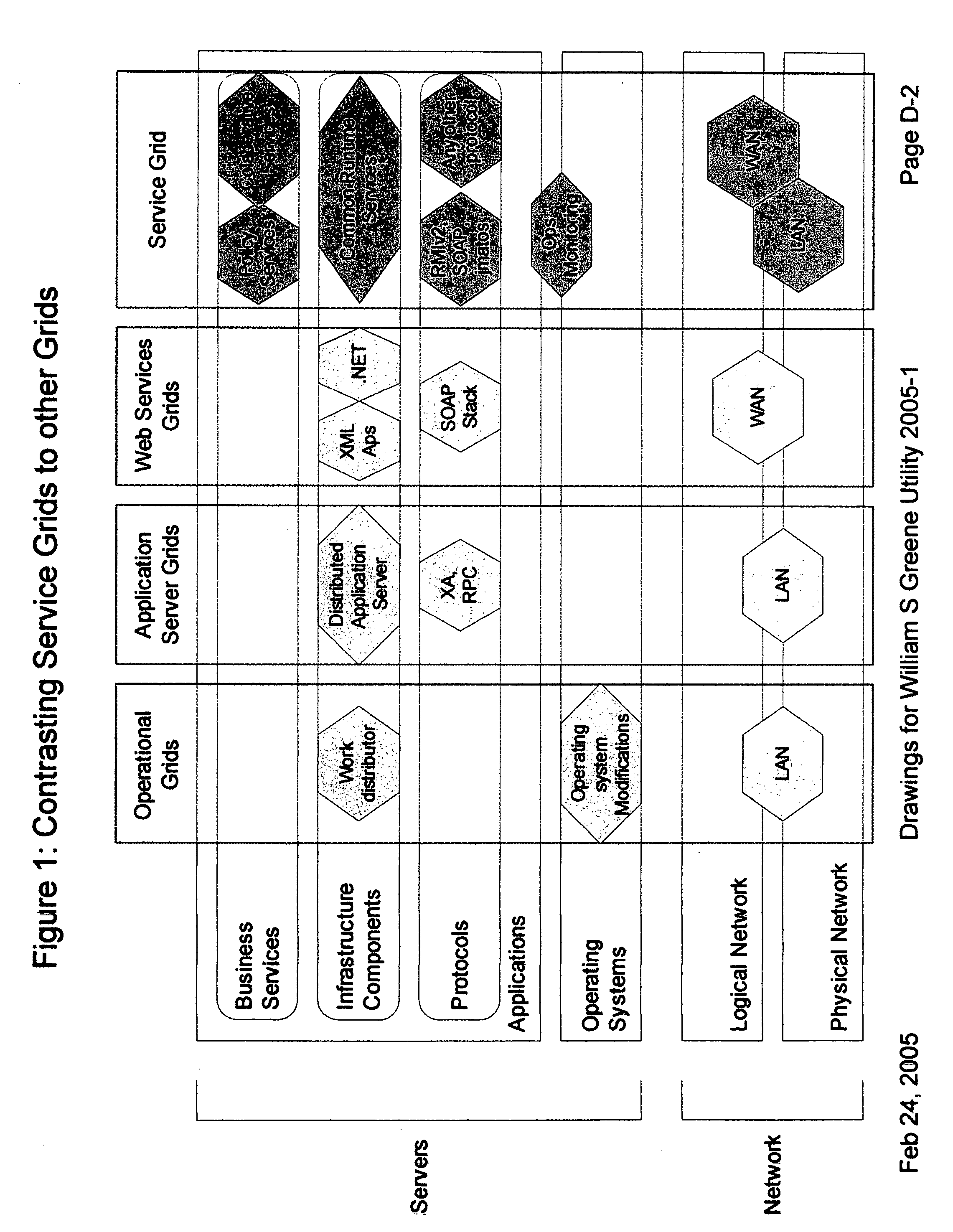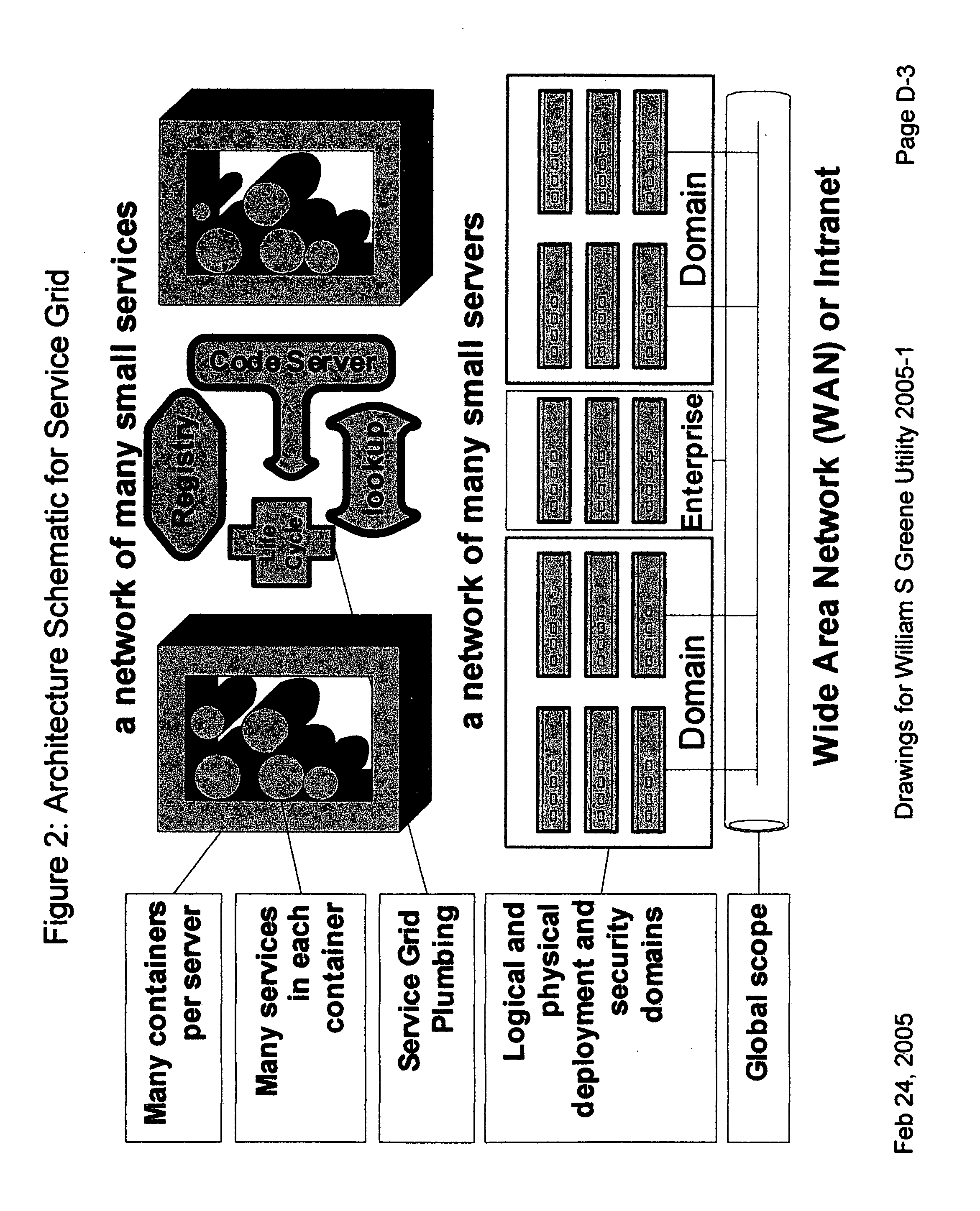Providing secure data and policy exchange between domains in a multi-domain grid by use of a service ecosystem facilitating uses such as supply-chain integration with RIFD tagged items and barcodes
a multi-domain grid and data exchange technology, applied in the field of network and information technology, can solve problems such as hierarchical, complex and time-consuming standardization process, application rigidity and development delays,
- Summary
- Abstract
- Description
- Claims
- Application Information
AI Technical Summary
Benefits of technology
Problems solved by technology
Method used
Image
Examples
Embodiment Construction
[0193] (See also text accompanying description of the figures in section 5 of this application and the figures attached.)
Functioning of a Policy Agent Transfer Gateway
[0194] Policy Agents were originally described in the prior referenced application: co-pending U.S. patent application “Ser. No. 10 / 913,887—System and Method for Use of Mobile Policy Agents and Local Services, Within a Geographically Distributed Service Grid, To Provide Greater Security via Local Intelligence and Life-Cycle Management for RFID Tagged Items”. FIG. 14: “Prior application—Schematic of Policy Agent” is a schematic illustration of the production of a Policy Agent from the core of a Microservice. Specifically designed to be built with Rapid Application Development methodology, the kernel (illustrated as a yoke in an egg) is a group of Event-Condition-Action (ECA) statements, a specific way of representing rules for policy. The kernel has an internal, local interface to the mobile agent (illustrated as the ...
PUM
 Login to View More
Login to View More Abstract
Description
Claims
Application Information
 Login to View More
Login to View More - R&D
- Intellectual Property
- Life Sciences
- Materials
- Tech Scout
- Unparalleled Data Quality
- Higher Quality Content
- 60% Fewer Hallucinations
Browse by: Latest US Patents, China's latest patents, Technical Efficacy Thesaurus, Application Domain, Technology Topic, Popular Technical Reports.
© 2025 PatSnap. All rights reserved.Legal|Privacy policy|Modern Slavery Act Transparency Statement|Sitemap|About US| Contact US: help@patsnap.com



